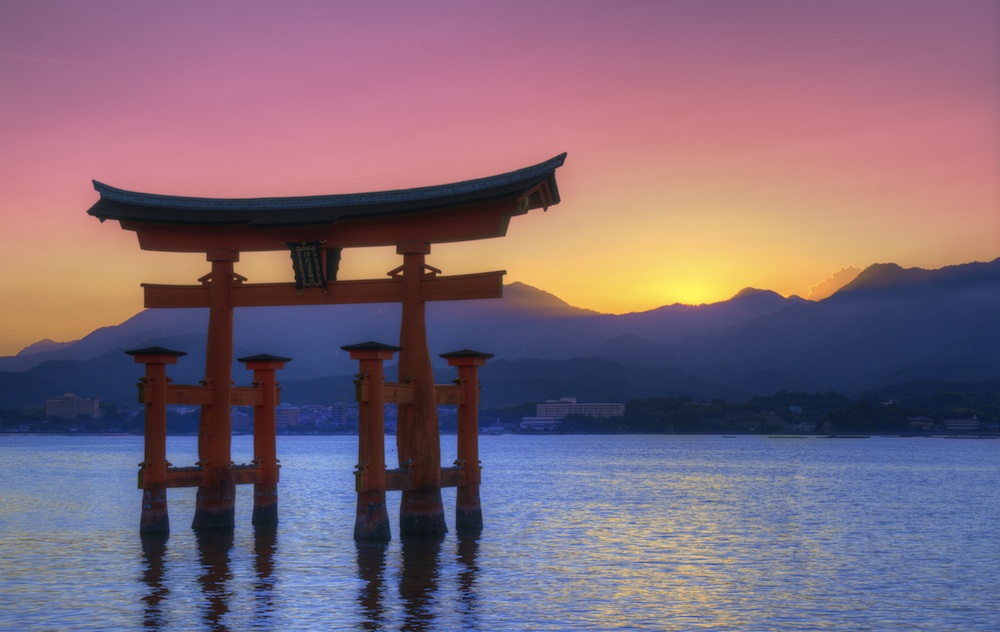Possible Japanese Shrine Fragment Washes Up in Oregon

A curved piece of wood, painted red, removed from a beach in Oregon may be a piece of a shrine set to sea by the 2011 Japanese tsunami.
The debris has not yet been confirmed as originating from the tsunami, but the chief public relations officer of the Association of Shinto Shrines told Oregon Public Broadcasting (OPB) that the wood appears to be part of a torii, a gate over the entrance of a Shinto shrine.
If so, the driftwood would hardly be the first object to make its way across the Pacific in the two years since the tsunami hit, killing more than 15,000 people. The National Oceanic and Atmospheric Administration (NOAA) has confirmed 21 pieces of debris from the tsunami on Pacific isles and the North American coastline. These confirmed pieces include docks, boats and other objects with serial numbers or identifying marks.
Meanwhile, the agency has received reports of more than 1,000 more pieces of debris that may be tsunami-related, and materials such as housing insulation have shown up in larger-than-usual quantities in Alaska and Hawaii. Debris from Japan is a constant visitor to North American shores, so most of the items will likely never be definitively linked to the tsunami, though scientists suspect they are related.
Tsunami damage
The Japanese government estimates that the March 2011 tsunami pulled some 5 million tons of rubble into the Pacific. Most of that debris sank off the coast of Japan, but approximately 1.5 million tons moved farther out to sea. No one knows how much is still drifting.
Oregon has seen its fair share of debris, including an enormous dock covered in sea life that washed up near Newport, Ore., in June 2012. This month alone, several small boats suspected to be tsunami debris washed up onshore, according to the Oregon Department of Fish and Wildlife. The boats were taken to landfills. [See Images of the Beached Tsunami Dock]
Sign up for the Live Science daily newsletter now
Get the world’s most fascinating discoveries delivered straight to your inbox.
According to OPB, Judson Randall of Oceanside, Ore., spotted the possible Shinto gate on Friday, March 22.
"My first thought was that it was something from the tsunami, because it had all that marine life on it and it looked man-made," Randall told the news agency. "It was a chilling thought."
Lost shrines
The religious symbolism of the possible shrine fragment could make it more sensitive than other tsunami debris. Shinto is the indigenous religion of Japan, and the Association of Shinto Shrines oversees about 80,000 shrines spread throughout the country. More than 4,500 Shinto shrines were damaged or destroyed by the tsunami or rendered unusable by radiation from the Fukushima nuclear meltdown after the 2011 disaster, according to the Washington Post.
The possible torii has been removed from the beach. Officials are awaiting response from the Japanese government to decide what to do with the object.
Follow Stephanie Pappas on Twitter and Google+. Follow us @livescience, Facebook & Google+. Original article on LiveScience.com.

Stephanie Pappas is a contributing writer for Live Science, covering topics ranging from geoscience to archaeology to the human brain and behavior. She was previously a senior writer for Live Science but is now a freelancer based in Denver, Colorado, and regularly contributes to Scientific American and The Monitor, the monthly magazine of the American Psychological Association. Stephanie received a bachelor's degree in psychology from the University of South Carolina and a graduate certificate in science communication from the University of California, Santa Cruz.










